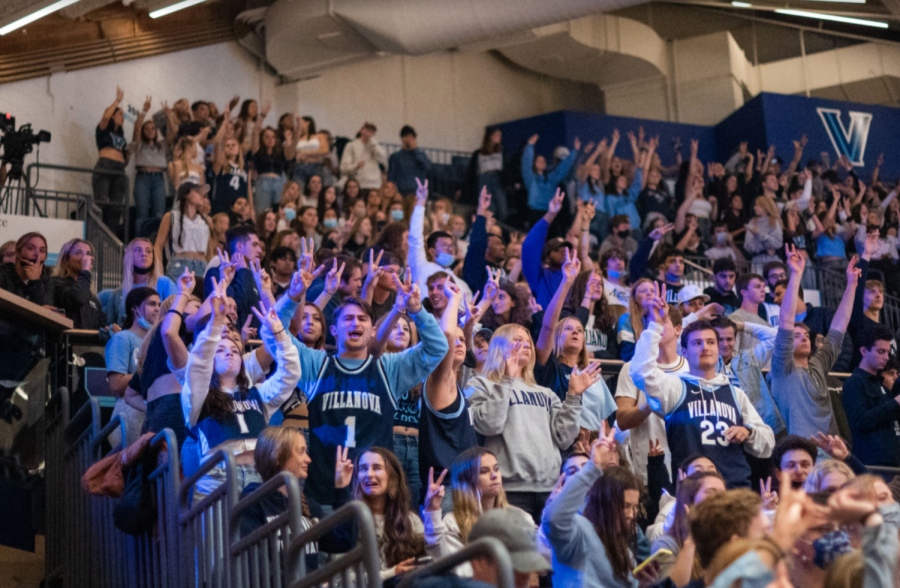Hoops Mania and the Deterioration of the Mask Mandate
Hoops Mania is held in the Finneran Pavilion and is a much anticipated event by students.
November 3, 2021
Before the school year, students were told by the University that there would not be a campus-wide mask mandate. That policy was part of the rationale given for the vaccine requirement: the University was taking the significant step of mandating community members be vaccinated so that all other restrictions could be lifted. The policy included the reasonable caveat that it reserved the right to bring the mask mandate back if conditions changed. Within a month, the University did just that in response to what administrators viewed as a concerning level of positive cases. The student body was not informed of what the process behind that decision entailed or what would lead to the lifting of the mandate. There was a promise to re-evaluate the policy after Parents’ Weekend, but there still has not been any guidance on when the administration will reconsider the mandate or what criteria they would use to make such a decision.
Students seem increasingly skeptical of the mask policy, as compliance around campus has been noticeably lax in recent weeks, and case counts remain low. Additionally, as students have been packing into bars, parties and concerts without masks all semester, it is fair to question the value of being required to wear one on the treadmill.
Research prior to the pandemic suggested masks were effective at helping mitigate the spread of respiratory viruses, especially when surgical masks or N-95 masks. It was that research that helped inform the implementation of mask mandates early in the pandemic before the availability of vaccines. More recently, a randomized control trial with around 300,000 participants confirmed this earlier hypothesis, concluding that mask wearing in unvaccinated adults, especially surgical and higher-grade masks, helped reduce the spread of coronavirus and the incidence of severe disease and death in the population. The data was clear: masking in unvaccinated adult populations was an effective way to mitigate the spread of coronavirus. However, there has been little research into the wisdom of masking a population with a 95 percent vaccination rate, as Villanova has. Factoring in that some of the remaining five percent likely have infection-acquired immunity, the University is likely approaching something close to herd immunity.
As we transition from the pandemic stage of COVID-19 to endemicity, at what point does the administration believe we can take off the masks?
It was great to be back in the Finneran Pavilion for something besides a COVID-19 test this past weekend at Hoops Mania. The arena was standing room only with thousands of students and hundreds of off-campus guests cheering for the basketball teams. During the concert, thousands of students packed onto the court like sardines. I would estimate mask wearing was below 10 percent.
It’s hard to think of a better natural experiment for testing the efficacy of the mask mandate than packing thousands of people into close quarters to scream and shout for three hours, all while essentially maskless. Add Halloween weekend parties into the mix, and the next two weeks of COVID-19 data will provide interesting insight into whether the mask mandate is necessary.
In scientific research, there has been a movement to pre-register studies to combat publication bias. By publicly announcing a research question and method before conducting the study, scientists can combat the tendency to withhold results that are inconclusive or that they disfavor. In that spirit, I think Hoops Mania inadvertently provided a natural experiment to test the continuation of the mask mandate, and I will write a follow-up to this piece in two or three weeks analyzing the data to see if we can glean anything of import.











